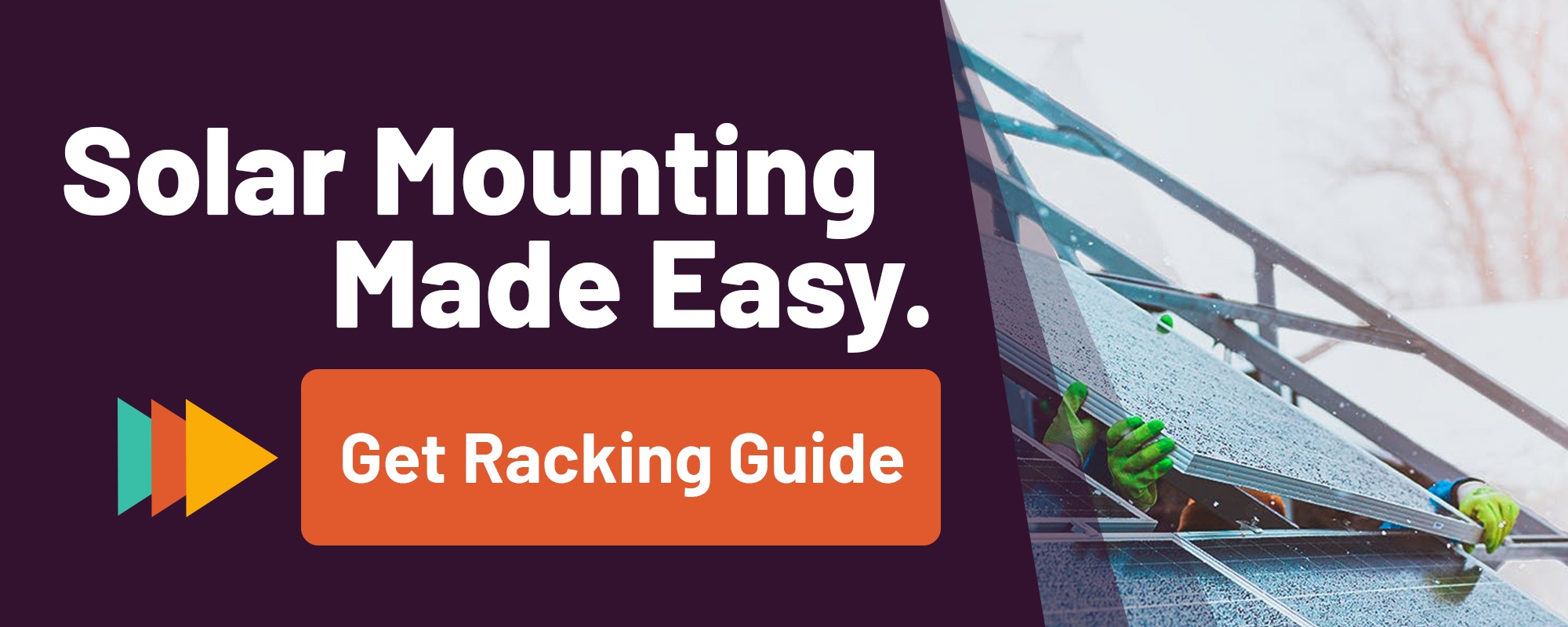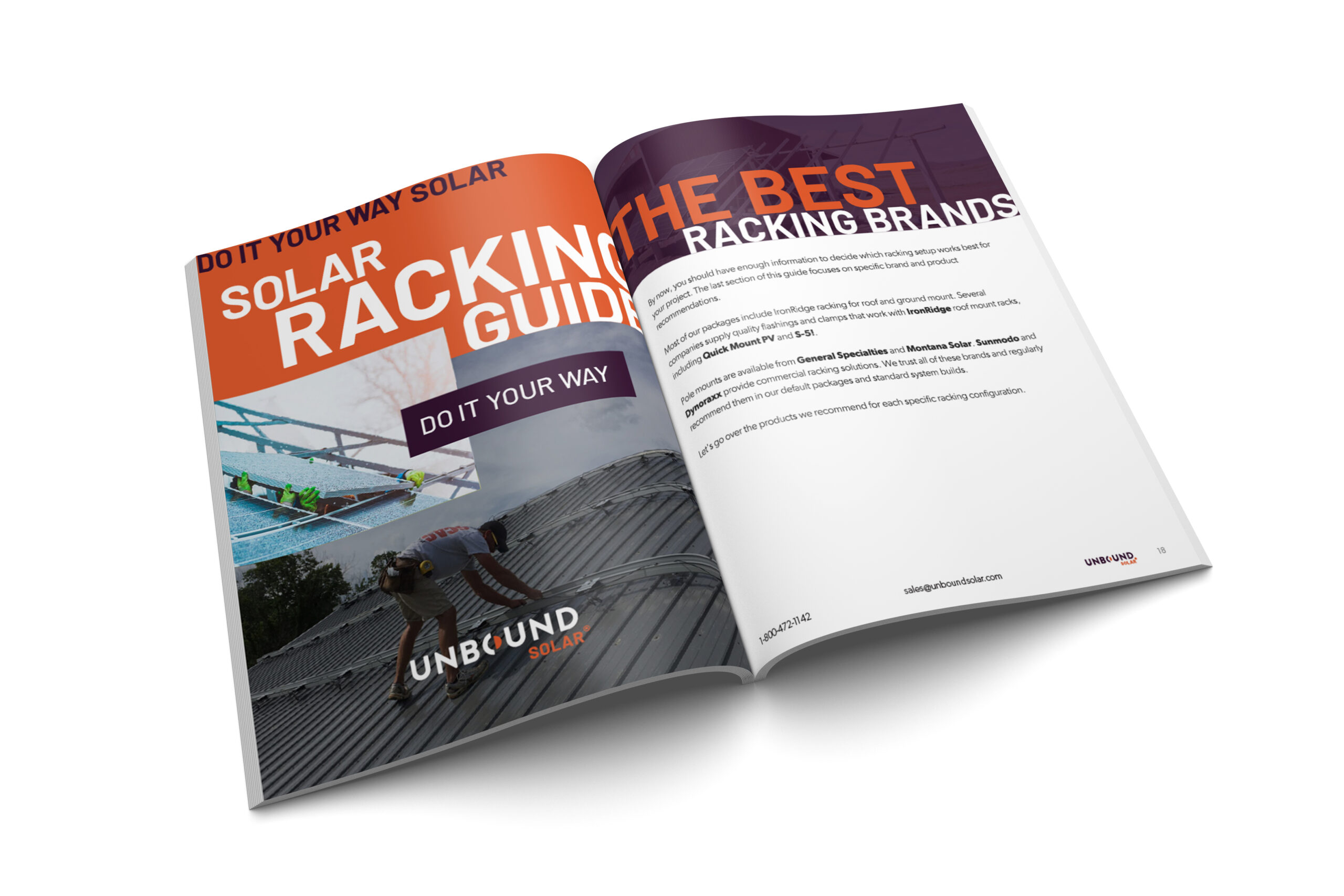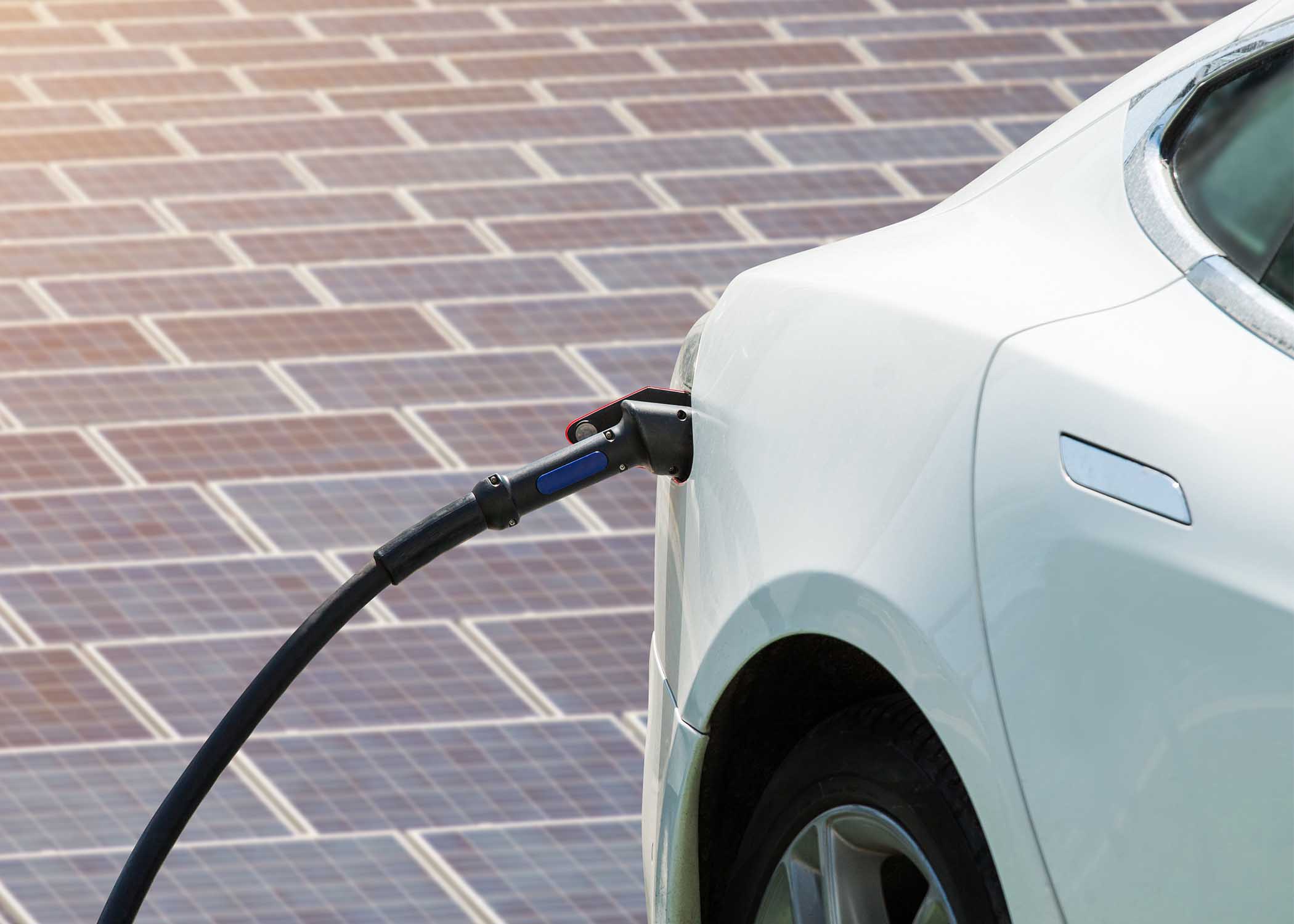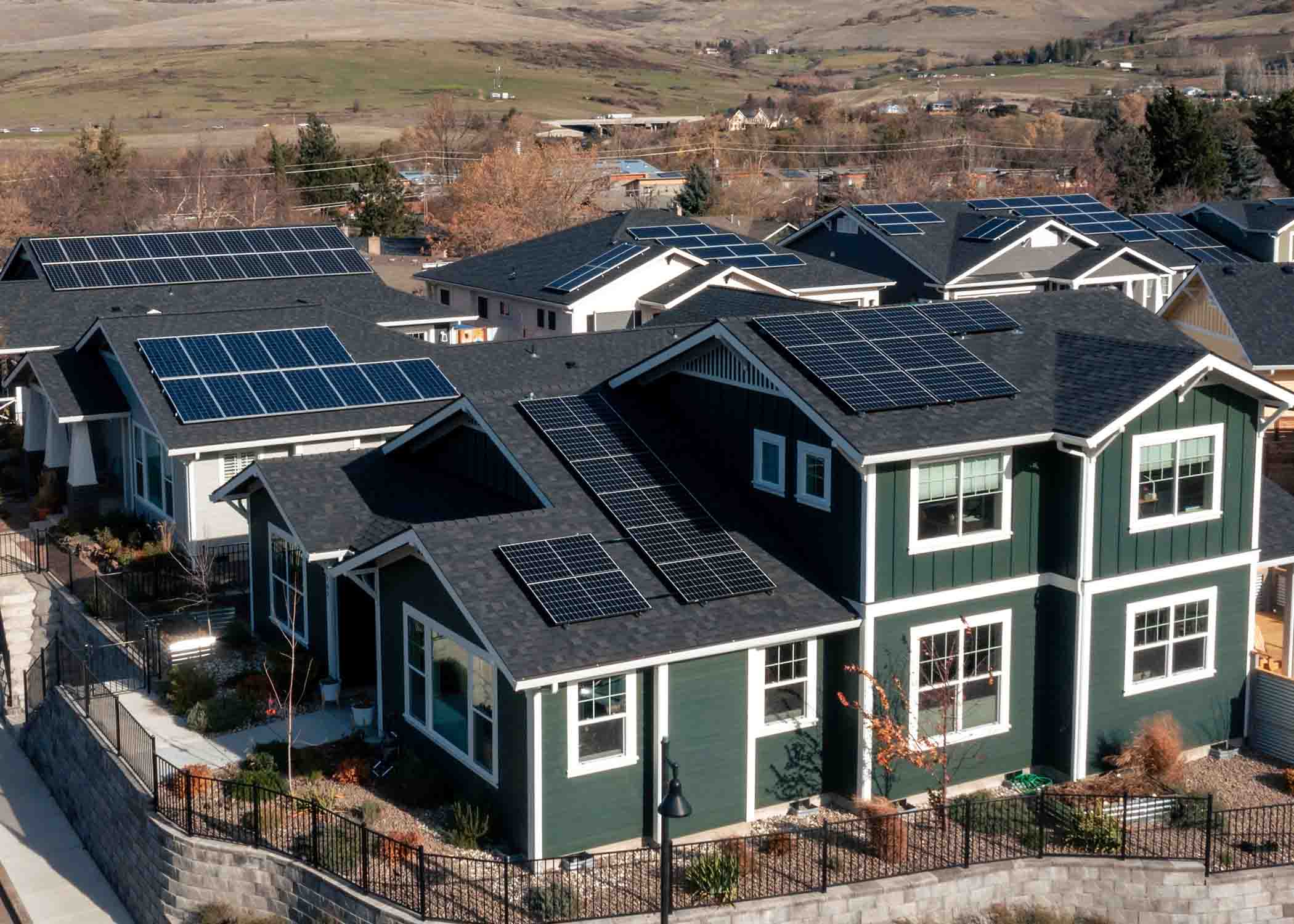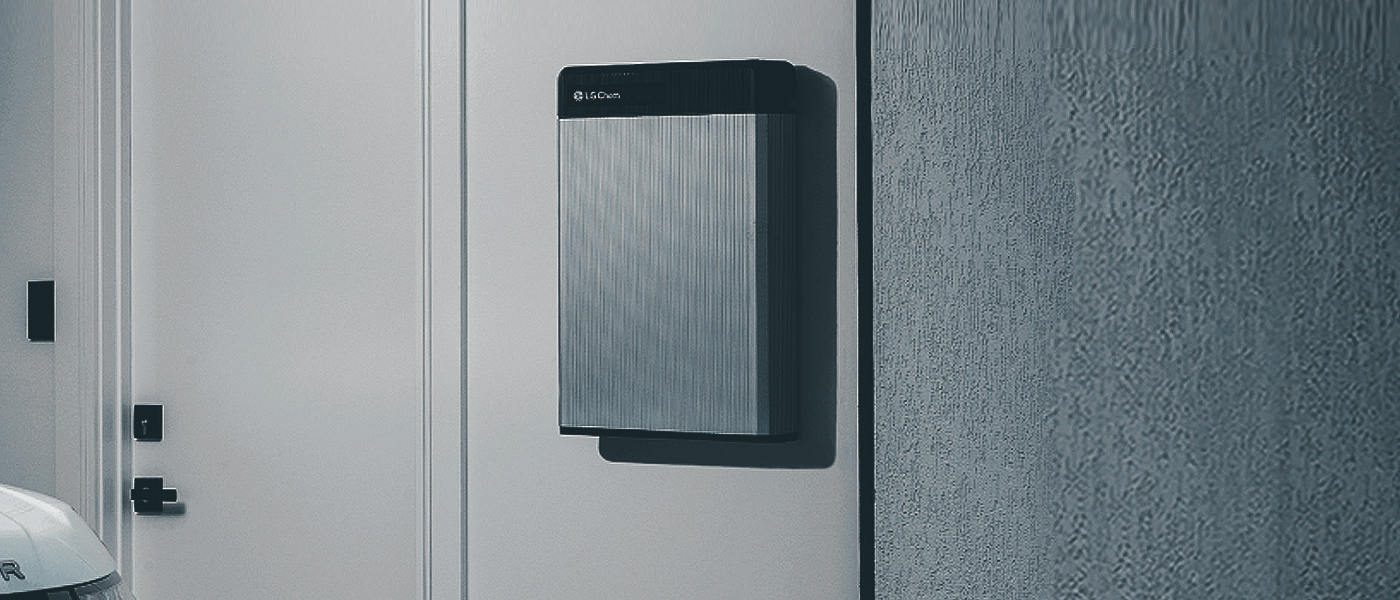What are the best solar panel mounts in 2021?
- Ground Mounts: IronRidge SGA XR1000
- Roof Mounts: IronRidge XR100
- Roof Mount Flashings: IronRidge Flashfoot 2, Quick Mount or S-5 (depends on roof material)
- Ballasted (no penetration): DynoRaxx
- Tilt Legs: Quick Mount or SunModo
- Pole Mounts: General Specialties or MT Solar
- Trackers: Wattsun (only recommended for large-scale commercial installs)
A solar panel mount (or solar racking system) is the foundation that holds your solar array in place.
Mounts are used to attach solar panels to the roof, ground, or another surface on your property. With proper installation, a sturdy mount secures your panels in harsh weather and protects your investment. Before choosing your mounting products, determine whether you’re doing ground mount or roof mount solar racking.
In this article, we’ll explain how to choose the best racking setup for your solar project. Then we’ll dive into our recommendations of the best solar mounts & racking products on the market in 2021.
What’s the Best Solar Panel Mount For My Project?
Most Cost-Effective Solar Racking Solution: Fixed Roof Mounts

Roof mounts tend to be the least expensive way to mount your solar system because they take advantage of your existing roof structure to provide a foundation for your panels. This saves money in racking material and labor costs to complete the installation.
You also get the added benefit of building your system in otherwise unused space. If you’re on a small property with limited space, a roof mount might be your only option.
Solar panels should be tilted toward the sun to maximize their production. Most residential rooftops tend to be sloped close enough to this optimal mounting angle that they don’t need any additional tilt adjustments. In this case, a fixed roof mount is the easiest and most cost-effective option.
To get a feel for how to install a roof mount system, check out this video where I walk through a demo roof mount installation:
Tilt Legs
If your rooftop is flat, you can use tilt legs to face panels so that they are more perpendicular to the sun. Tilt legs simply lift the panels up to a fixed angle, so that they face directly into the sunlight.
Whereas most residential rooftops are sloped, flat roofs (or low slope roofs) are more common in a commercial setting. In these cases, tilt legs can be used to adjust the panels to the proper angle.

Read our article about tilt & azimuth angle for an in-depth walkthrough on how to find the perfect angle to mount your solar panels.
Ballasted (Zero Penetration) Roof Mounts
Most roof-mounted racking techniques require you make penetrations in your roof to clamp the mount in place.
If you don’t feel comfortable drilling holes into your roof, or your lease agreement does not permit roof penetrations (as is the case for our flagship Unbound Solar® office), you can go with a ballasted roof mount.

Ballasted mounts rest on a free-standing base that isn’t drilled into your roof. This mount relies on the weight of the PV array, as well as concrete blocks, to hold the system in place.
Ballasted mounts only work on flat or low-slope roofs, and they must be well-engineered to handle the significant amount of extra weight added by the concrete blocks holding the system in place.
Choose Ground Mounts For Ease of Maintenance
Fixed Ground Mounts

A standard ground mount uses a simple metal frame to support the weight of the rest of the system.
The best way to secure a ground mount in place is to set the structure in a cement slab. If you choose to perform a DIY installation, you’ll likely need to rent equipment to dig footings and pour cement.
Standard ground mounts are normally installed at a fixed angle and position, though there are adjustable options for certain applications.
Pole Mounts
To lift your array off the ground, you can also mount your panels on the top of a sturdy pole. This provides more ground clearance, which is mainly useful in areas with heavy snow where you can expect snowfall to accumulate on the ground below your array.

The steep angle of pole mounts naturally aids snow removal, as the weight of the snow causes it to naturally slide off the face of the panels.
Most pole mounts are also adjustable. If you like to get hands-on with your system, you can adjust the tilt angle of your panels to get the most production out of your system on a seasonal basis.
Trackers
Trackers are ground mounts that adjust automatically, ensuring your panels always face directly at the sun.
In theory, trackers are useful in optimizing the facing of your panels to squeeze every last drop of production out of your array. In practice, if you need more output, it’s far more cost-effective to add 1 or 2 extra panels to your array (presuming you have space).
We only recommend trackers in massive commercial-scale systems, or for rare edge cases where space efficiency is the primary concern guiding the system design.
Read more about trackers in our article: “Should You Buy a Solar Tracker? (No, Probably Not)”
The Best Solar Panel Mounts You Can Buy in 2021
Best Roof Mount: IronRidge XR100
IronRidge is a leading PV racking manufacturer making quality roof-mount racking. Their solutions are available in three sizes: XR10, XR100 and XR1000.
The XR100 is our standard roof-mount racking solution. This will work for almost all systems, unless you need a reinforced foundation to hold up in heavy weather.
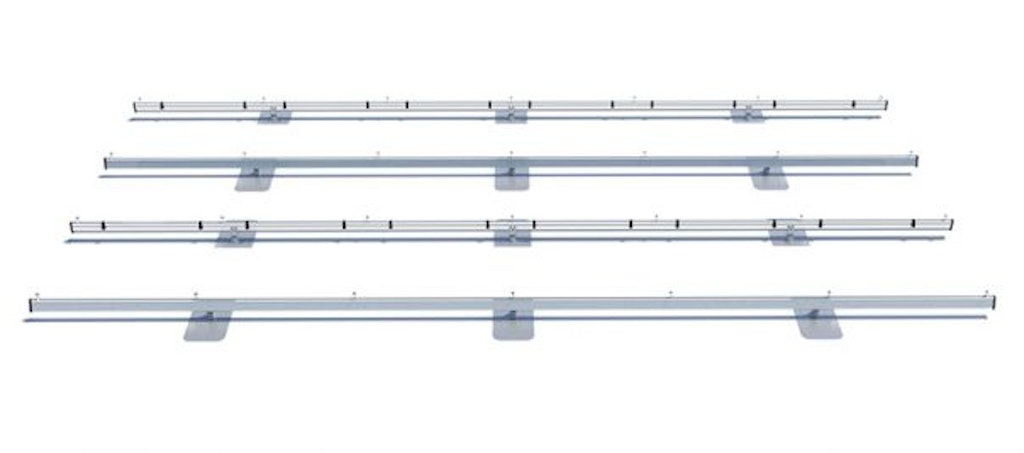
In high wind and snow areas, we recommend an upgrade to the XR1000, which is built to hold up in extreme conditions.
The XR10 is a viable lightweight solution for areas with no snow and very little wind loading. We commonly recommend it for installations in Arizona and Southern California, where the weather is warm and mild.
Most folks use the IronRidge XR100. It only makes sense to upgrade to the heavy-duty XR1000 if you live in hurricane regions or heavy snow zones.
You also need flashings to attach the base of the mount and provide weatherproofing and protection for your roof. Your roofing material will dictate which flashing you use:
- Shingle: The IronRidge Flashfoot 2 is our default choice. Quick Mount has nice flashings for shingle roofs as well.
- Metal roofs: SunModo EZ standing seam clamp or S-5!’s metal roof clamps.
- Tile: Quick Mount tile hooks and flashings.
- Slate: Quick Mount QBase slate flashings.
- Shake (wooden): Quick Mount
shake flashings.
Best Tilt Legs: Quick Mount/SunModo
We recommend the IronRidge XR100 or XR1000 (same as a standard roof mount) with the addition of tilt legs.

We commonly pair these with the Quick Mount QBase low slope flashings, which are code compliant for flat or low-slope roofs.
Another option is the SunModo EZ Sunbeam commercial racking system. It can be built on top of the roof, above air conditioners and other obstructions, which helps to maximize the usable build space on your rooftop.
Best Ballasted Mount: DynoRaxx
The concept of a ballasted mount is to build your system without drilling into your roof.
This is especially useful if you don’t own the property (for example, a commercial installation in a rented office building).
We like the Dynoraxx ballasted racking system. The trays are fiberglass, which are lightweight and won’t damage your roof.
The Dynoraxx ballasted mount is lightweight and easy to install. The fiberglass trays don’t expand and contract under the heat of the sun, which means it won’t warp and damage your roof.
Best Ground Mounts You Can Buy in 2021
Best Fixed Ground Mount: IronRidge SGA
The IronRidge SGA ground mount uses XR1000 rail, which is the same equipment used for heavy-duty roof mounts.
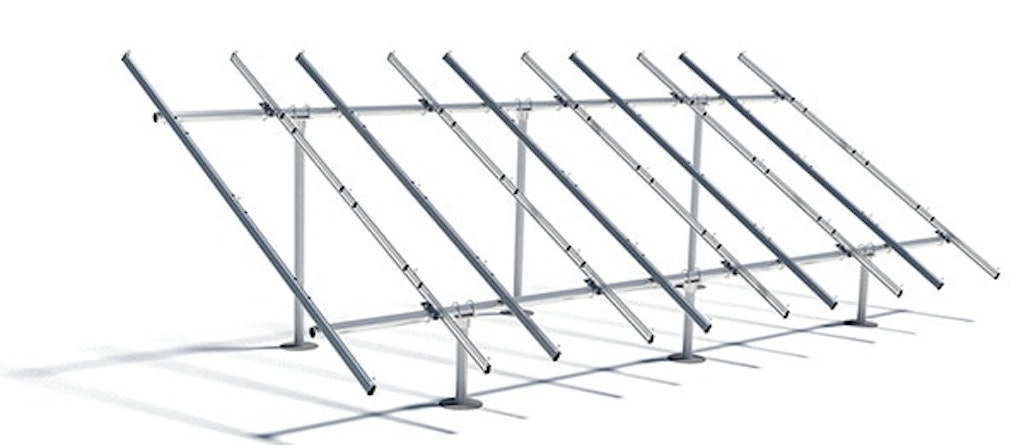
But for ground mounts, the rails need to be set on a substructure of 2” or 3” steel pipe. Since this would be incredibly expensive to ship, we strongly recommend sourcing the steel pipe from a local building supply store.
This is the most affordable and easy to install ground mount system. We recommend a fixed ground
Read more about the pros and cons of roof mounts vs. ground mounts to determine which is best for your project.
Best Pole Mounts: General Specialties or MT Solar
Our preferred pole mount comes from General Specialties. They make high quality, adjustable pole mounts which are manufactured in the USA and built to order.
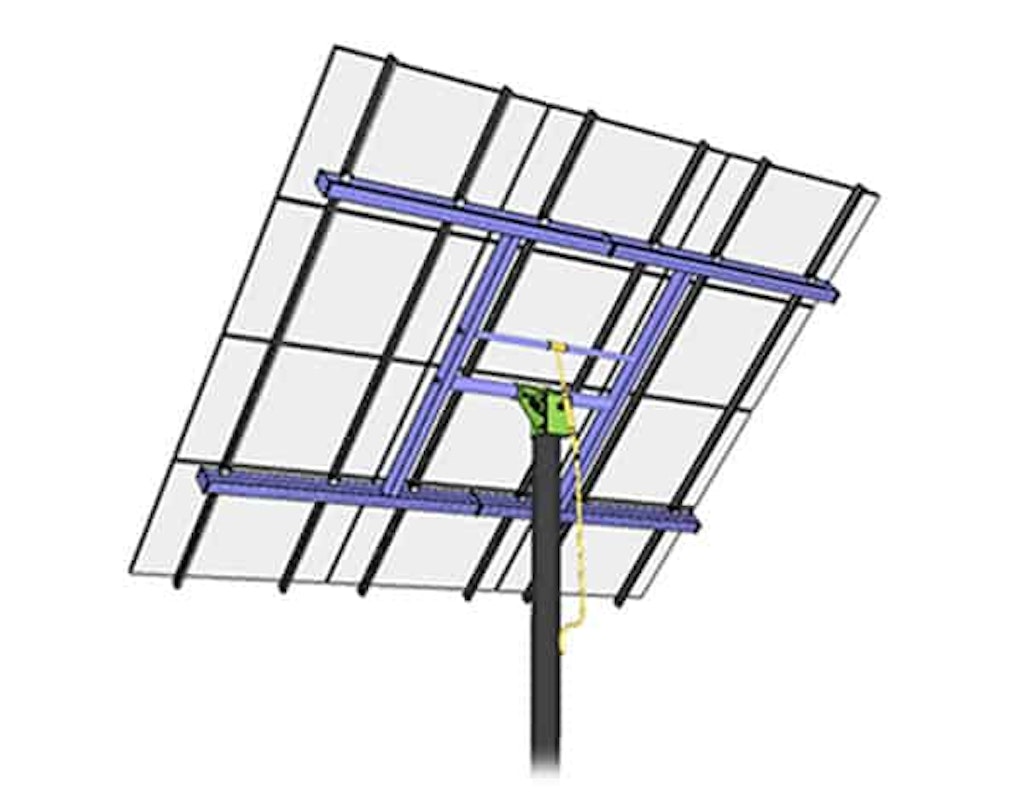
MT Solar pole mounts are another great option. They designed their pole mount with ease of use in mind. They are easier to install and adjust than any other pole mount on the market.
Best Trackers: Wattsun
As we mentioned above, trackers are the least cost-effective mounting option available, and we almost never recommend them for residential installations.
Trackers used to be popular when panels were 5-10 times their current price. It made a lot more sense to squeeze every bit of output you could from the panels.
Today, you’d be better off using a fixed ground mount or pole mount and adding a few more panels to cover the extra output.
But if you have your heart set on a tracker, Wattsun makes
For commercial applications, single-axis trackers are a great way to save space and maximize efficiency for large utility-scale installations. But they don’t make much sense for residential systems.
